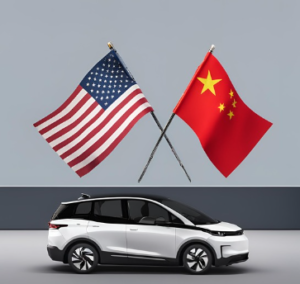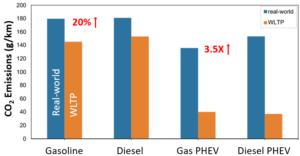Regulations
Euro 6 is dead! Long live Euro 6!

Euro 7 emission standards for light- and heavy-duty vehicles are being debated amongst three agencies: the EU Commission, the EU Council and the EU Parliament. The Council has recently made its stand clear : existing Euro 6 standards are mostly good enough for tailpipe emissions. Here is a summary of the key elements of its proposal.
Image generated using AI
As context, the EU Commission published its proposal for Euro 7 in November, 2022 and we have covered it here. It proposed significant reductions in tailpipe limits for NOx and particulates, introduced new test cycles, regulated new species and included particles down to 10 nm (vs 23 nm in Euro 6).
The Council is proposing a much softer approach, the core argument being that the industry has to bear significant costs for transitioning to a zero-tailpipe fleet in the coming years, questioning the need for further upgrades to internal combustion engines.
The tables below compare the tailpipe standards in Euro 6 and the two proposals for Euro 7, one by the Commission and the latest by the Council. Another vote is now expected by the Parliament before the rule is finalized.
Key elements of the Council proposal and differences with the Commission:
- No fuel / technology neutrality : Separate limits for gasoline and diesels as in Euro 6 (with higher NOx limits for diesels)
- Limits on criteria pollutants are kept at the same level as Euro 6 for light-duty vehicles.
- For heavy-duty vehicles, there is a recognition that moving to zero-emitting vehicles is going to take longer and the limits have been tightened. For NOx, the limit is reduced by 50% compared to Euro 6.
- Testing requirements are greatly simplified compared to the Commission proposal. All emissions proposed to be measured on the WLTP (Euro 6, light-duty) and WHTC (Euro VI, heavy-duty) test cycles and on-road testing with PEMS. The Commission has proposed the introduction of new tests and limits, such as the “budget” for short trips and the cold, hot tests for heavy-duty, with which the Council does away.
- Conformity factors are back. The Commission had argued for removing conformity factors altogether (that is, RDE limits = WLTP/WHTC) but the Council favors keeping them.
- Particles counted down to 23 nm, as in Euro 6. Much work has been done in the past few years to show that there are significant particulate emissions below the current 23 nm cut-off, and that particles down to 10 nm can be counted. The Commission had proposed the cut-off to be lowered to 10 nm. The Council is proposing to keep the original cut-off.
- For particles, standards are proposed for brakes and tires, emphasizing the increasing fraction of particulate emissions from these sources (relative to tailpipes of modern vehicles equipped with filters).
- Lifetime requirements have been extended, this recognizes that new vehicles sold will be around for a long time and also exported to second-hand markets.
Table comparing Euro 6 standards for light-duty passenger cars, and the two Euro 7 proposals by the Commission and Council.

Table comparing Euro 6 standards for heavy-duty vehicles, and the two Euro 7 proposals by the Commission and Council.

Timing
While the Commission had proposed an implementation timing of 2025 and 2027 for light- and heavy-duty, respectively, delays look imminent (especially for light-duty).
The Council is proposing implementation 30 months after final regulation for new light-duty vehicle types, and 42 months time for all new vehicles.
For heavy-duty vehicles, the respective gaps between regulation order and implementation proposed are 48 months and 60 months, respectively.
Note that the Commission proposal had also done away with the separate timings for new types and all vehicles, but the Council wants that back.
Implications
First, this is not the final regulation, although an important position and a sign of the wide differences in the technical and economic / political considerations at play between the various agencies. So more to come with the Parliament proposal and the ensuing trilogue discussions.
Still, a few points to make on the Council proposal. Euro 7 has been in the making for several years now, with various stakeholder meetings and technical studies done to assess the extent of emissions reduction possible. Suppliers and OEMs have invested significant resources already into developing advanced hardware and system strategies to meet proposed tough regulations by the Commission. The Council proposal voices the need to take a pragmatic look at the need for further regulations given the electrification mandates and competition from China. But it is important to not throw the baby with the bath water and take advantage of mature technologies which can effectively deliver deep pollutant reductions. After all, vehicles sold in the coming years are going to be around for another decade or two, so it is useful to set standards that ensure best available technology.
Finally, countries like China and India look to Europe for setting their own standards, and there are implications for the air quality in those regions.
Stay tuned, we will post more on this topic in the coming weeks.
NOTE: This is a high-level easy read, we clearly do not touch upon several other important details here : battery health monitoring, on-board monitoring / diagnostics, etc.
Sign up here to receive such summaries and a monthly newsletter highlighting the latest developments in transport decarbonization
5-Min Monthly
Sign-up to receive newsletter via email
Thank you!
You have successfully joined our subscriber list.
Recent Posts

Summary of EV related U.S. Tariffs on Chinese Imports
The Biden Administration has announced significant new tariffs on a range of Chinese-made electric vehicles and related strategic components. Here is a summary.

SAE WCX 2024 – Year in Review
The SAE World Congress was held in Detroit and covered a broad range of topics pertinent to transport decarbonization. Here’s a link to download presentations on emissions and sustainability.

Real-world CO2 emissions from cars and vans in Europe are 20% higher than certification values
EU Commission finds real-world CO2 emissions from cars and vans in Europe greatly exceed lab certification values. Plug-in hybrids are not being charged as much as estimated.
